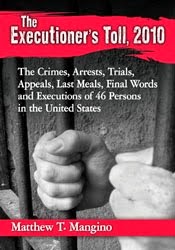More can be done to manage the size of Pennsylvania's prisons, including the zealous pursuit of sentencing alternatives
The Pennsylvania Law Weekly
October 1, 2012
More can be done to manage the size of Pennsylvania's prisons, including the zealous pursuit of sentencing alternatives. As of August 31, the Department of Corrections was housing 51,508 inmates in 27 state institutions — 105.5 percent of capacity.
Building prisons will not solve the problem, although construction is under way in Pennsylvania. Construction is near completion at Benner Township near SCI Rockview and is under way at SCI Phoenix, two new facilities on the grounds of SCI Graterford.
This summer, lawmakers made yet another attempt to deal with ever-expanding prison growth. In July, Governor Tom Corbett signed into law SB100. The new law includes some modest steps toward prison reform. It expands eligibility for intermediate punishment programs, creates a sanctioning scheme that minimizes the number of technical parole violators returned to prison and diverts low-level misdemeanors from state prison, reported The Philadelphia Inquirer.
Pennsylvania's Justice Reinvestment Initiative (JRI) proposed reinvesting any savings from reducing the prison population to create a risk-assessment tool for judges when sentencing defendants; to fund local law enforcement; and to give judicial districts an incentive to divert defendants to county jails, reported The Pittsburgh Post-Gazette.
Pennsylvania Corrections Secretary John E. Wetzel said it was important that JRI funds be used to develop a risk-assessment tool to provide judges with solid information on whether a defendant might commit a crime in the future.
"The better and more information judges have, the better placement they can make," Wetzel told the Post-Gazette.
When Wetzel refers to "placement," one must assume he is talking about more than just being locked away in a cell at some state correctional facility.
For years, alternatives to incarceration have been based primarily on the recommendation of a prosecutor or the county adult probation office. The typical presentence report emphasizes the details of the crime, the defendant's prior criminal record and a brief outline of the offender's background. The report seldom lists mitigating issues nor expands on risk and needs of an offender.
There is a way to have an impact on incarceration rates, address the offender's needs and reduce recidivism. At the sentencing hearing, defense counsel would be wise to utilize the assistance of a sentencing consultant. Such a consultant has been referred to as a sentence advocate, sentencing specialist, post-conviction mitigation consultant or client-specific planner.
Whatever the name, planning and assistance at sentencing, including a formal report and testimony, are powerful and important tools available to criminal defense practitioners.
The term "client-specific planning" (CSP) was coined by Dr. Jerome Miller and elaborated on for the Canadian Solicitor General. CSP enhances the ability of defense counsel to provide an alternative to the prosecutor's recommendation. CSP is not necessarily at odds with the criminal justice agencies, but provides a meaningful alternative to the state's narrative.
CSP is more widely used in federal court in light of the landmark decision in U.S. v. Booker, 543 U.S. 220 (2005). The U.S. Supreme Court made the U.S. Sentencing Guidelines advisory. However, the opinion implored that sentencing judges "maintain a strong connection between the sentence imposed and the offender's real conduct — a connection important to the increased uniformity of sentencing that Congress intended its guidelines system to achieve."
That does not mean there is no place for CSP in state courts. The Pennsylvania Sentencing Guidelines permit a judge to impose a sentence outside the guidelines accompanied by a written explanation for the deviation.
In Commonwealth v. Holiday, 954 A.2d 6 (2008), the Superior Court found that the sentencing guidelines have no binding effect and create no presumption in sentencing. They are advisory guideposts that must be respected and considered.
The work begins once a sentence advocate is engaged. Retaining a sentence advocate should occur as a plea is being negotiated or the case is being prepared for trial. Making plans early in the process to retain a sentence advocate will ensure there is enough time to prepare a strong report. Sentence advocates come from a host of backgrounds, including criminology, parole supervision, treatment providers, law enforcement and former prosecutors, to name a few.
At the outset, CSP for advocacy at sentencing requires some context. The client's counsel must provide information regarding the posture of the case. Is the client considering a plea or preparing for trial?
Initially, access to police reports, criminal history, court transcripts and the court file are crucial. Pertinent information from bail hearings, the preliminary hearing and other pretrial proceedings should not be overlooked.
An interview with the defendant must include a detailed history, including social contacts, criminal justice contacts — juvenile and adult — mental health history, drug and alcohol history, medical issues, employment and education history.
A sentence advocate can order psychological testing, risk and treatment assessments. Testing can provide the court with a snapshot of the client's current treatment needs. For instance, the Texas Christian University drug screen is a widely accepted assessment that provides a simple numerical score on a scale of 0 to 9. The TCU screen can be used to support a recommendation for community treatment.
The Level of Service Inventory-Revised (LSI-R) is a treatment and supervision assessment that can also be used in assessing risk. Using a risk instrument can provide some comfort for a prosecutor or judge who is hesitant to consider sentencing alternatives.
A client should voluntarily submit to independent urinalysis testing while on pretrial supervision. A sentence advocate should document any pretrial treatment, in-patient or out-patient, attendance at group therapy, such as Alcoholics Anonymous, verify any counseling or mental health treatment, and note volunteer work completed in the community.
Once a clear picture of the client has emerged, the expert needs to identify the community resources, or, as Wetzel called them, "placements."
Based on the client's profile and needs, a persuasive argument must be formulated using evidence-based practices to support an alternative sentence that might include one or more of the following forms of punishment: county intermediate punishment 42 Pa.C.S.A. §2154.1, state intermediate punishment 42 Pa.C.S.A. §2154.2, work-release, county or state probation supervision, electronic monitoring, community halfway house, house-arrest, drug and alcohol treatment, in-patient mental health treatment or participation in a therapeutic drug, gun, veteran or re-entry court.
There are clear departures between a presentence report and a CSP. For instance, sentencing options are identified and documented in a CSP. The client should be pre-interviewed by the service provider and accepted for placement. A CSP must provide documentation that the client has been accepted in a residential treatment program or community residential confinement. Proof of employment is extremely important and a valuable component of any successful alternative sentencing plan.
Can a sentence advocate qualify as an expert? In Miller v. Brass Rail Tavern, 664 A.2d 525 (1995), the state Supreme Court held that qualifying as an expert witness requires a reasonable pretension of specialized knowledge on the subject under investigation. If, pursuant to Frye v. United States, 293 F. 1013 (D.C. Cir. 1923), the scientific evidence has "general acceptance" in the relevant scientific community.
However, even where a sentence advocate's expert status is uncertain or denied, the witness may be allowed to testify and even offer hearsay evidence at a sentencing hearing. See Green v. Georgia, 442 U.S. 95 (1979).
The written CSP and testimony at a sentencing hearing should include a clear analysis of any patterns that are extrapolated from the instant offense and criminal history that identifies mitigating factors suggesting the client can be managed safely in the community.
Finally, the CSP should include a section on evidence-based predictions of success in the community; research addressing recidivism, risk and substance-abuse relapse; and research that supports the sentence advocate's opinion imploring an alternative to traditional incarceration.







